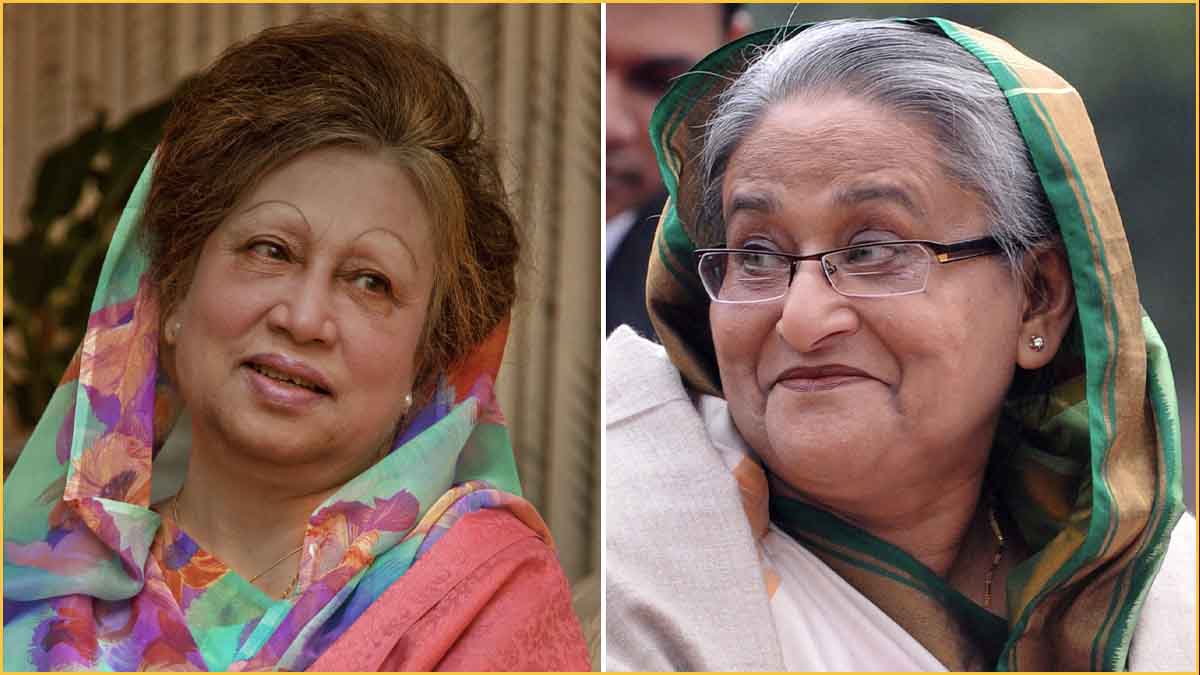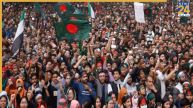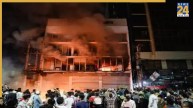Bangladesh Prime Minister Sheikh Hasina resigned following weeks of violent protests and has left the country. Army Chief Waqar-uz-Zaman announced that an interim government will be formed.
Students protested in the streets for several weeks to remove Sheikh Hasina from office. On Sunday, there was massive violence in Bangladesh, resulting in hundreds of deaths. On Monday, the protesters also planned a long march to Dhaka.
The situation was so tense that the army was deployed across the country to stop the protesters, but reports say the army didn’t try to stop them. Earlier, the Army Chief stated that the military always stands with the people.
Hasina’s Resignation Echo Zia’s 1996 Fall
Sheikh Hasina was elected Prime Minister for the fifth time in January. Her party, the Awami League, won 224 out of 300 seats in the general elections. However, these elections were considered controversial, and the opposition boycotted them. Sheikh Hasina’s resignation in less than seven months brings back memories of Khaleda Zia’s resignation 28 years ago.
BNP and Awami League Face Similar Political Battles 28 Years Apart In Bangladesh
The stories of Khaleda Zia and Sheikh Hasina’s resignations are quite similar. In the past, it was Sheikh Hasina opposing Khaleda Zia, and now it’s Khaleda Zia’s party, the Bangladesh Nationalist Party (BNP), opposing Sheikh Hasina.
Sheikh Hasina recently compared the BNP to a terrorist organization and accused it of inciting students.
Khaleda Zia was accused of rigging the 1996 elections, which were held on February 15 that year. The opposition boycotted the elections, and Khaleda Zia took the oath as Prime Minister on February 19. To remove her from office, the opposition, led by Sheikh Hasina, began a non-cooperation movement. On March 31, Khaleda Zia was forced to resign.
After Khaleda Zia resigned, the President dissolved Parliament and appointed former Chief Justice of the Supreme Court Muhammad Habibur Rahman as the interim Prime Minister.
Now, looking at 2024, general elections were held in Bangladesh in January. Fifteen opposition parties, including the BNP and Jamaat-e-Islami, boycotted the election, resulting in only 40 percent voter turnout. Sheikh Hasina’s party, the Awami League, won 224 out of 300 seats in Parliament. The opposition accused the elections of being rigged.
In the 1996 elections, Khaleda Zia’s BNP won 278 out of 300 seats. When she announced her resignation, Khaleda Zia accused the opposition of ruining the economy.
However, when Khaleda Zia returned to power, and a movement led by Sheikh Hasina was active across the country, government employees joined in. They went on strike, and Khaleda Zia’s photos were removed from many offices.
On the day Khaleda Zia resigned, Sheikh Hasina’s party instructed its members to surround the President’s House. The Awami League demanded that it remain surrounded until a neutral interim government was formed.
That day, all of Bangladesh was on high alert. The army was stationed outside the homes of Khaleda Zia and 27 ministers of her government.
Also Read: Bangladesh Crisis: How The West, Including UK And US, Influenced Sheikh Hasina’s Resignation












